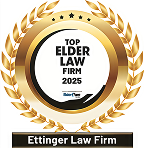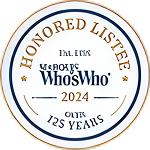The fourth step is to determine, with input from the client, who should make medical decisions for the client if they are unable to and who should be appointed to handle legal and financial affairs through the power of attorney in the event of the client’s incapacity. Next, we will consider what type of trust, if any, should be used, whether a simple will would suffice, who should be the trustees (for a trust) or executors (for a will), and what the plan of distribution should be. In order to avoid a conflict, the trustees who are chosen in lieu of the grantor should be the same persons named on the power of attorney. At this point, great care should also be taken to ensure that the feelings of the heirs will not be hurt. Good estate planning looks at the client’s estate from the heirs’ point of view as well as the client’s. For example, if there are three children, it may be preferable that one be named as trustee or executor, as three are usually too cumbersome and if the client chooses only two, then they are leaving one out. If there are four or five children, we prefer to see two trustees or executors chosen. This way, the pressure will be reduced on just the one having to answer to all the others. More importantly, the others will feel more secure with two siblings jointly looking after their interests.
If the distribution is to be unequal, it may need to be discussed with the affected children ahead of time to forestall any ill will or even litigation after the parents have died. By considering the relative ages of the children, where they live, and their relationships amongst each other and with their parents, the advisor will generally find a way to craft a plan that accommodates the needs and desires of all parties concerned. Some of the techniques we find useful in this context are to offer a delayed distribution, such as twenty percent upon the death of the grantor, one-half of the remaining balance after five years, and the remainder after ten years. These same percentages may also be used at stated ages, such as thirty, thirty-five, and forty. Also, when leaving percentages of the estate, unless it is simply to the children in equal shares, it is often useful to determine the monetary value of those percentages in the client’s current estate. This will allow the client to see whether the amount is truly what they wish to bequeath. Percentage bequests to charities should be avoided so that the family may avoid the possibility of having to account to the charity for the expenses of administering the estate.
In terms of the type of trust, we are generally looking at several options for most clients. It is important to determine whether there should be one trust or two. In order to avoid or reduce estate taxes, there should be two trusts for spouses whose estates exceed or may at a later date exceed the state and/or federal estate tax threshold. Should the trust be revocable or irrevocable? The latter is important for protecting assets from nursing home expenses subject to the five-year look-back period for facility care and the new two and a half year look-back for home care. Primary features of the irrevocable Medicaid Asset Protection Trust (MAPT) are that neither the grantor nor the grantor’s spouse may be the trustee and that these trusts are income-only trusts. Most people choose one or more of their adult children to act as trustees of the MAPT. Since principal is not available to the grantor, the client will not want to put all of their assets into such a trust. Assets that should be left out are IRA’s, 401(k)’s, 403(b)’s, etc. The principal of these qualified assets are generally exempt from Medicaid and should not be placed into a trust, as this would create a taxable event requiring income taxes to be paid on all of the IRA. If the institutionalized client has a spouse in the community, up to about one hundred and thirty thousand dollars may also be exempted. Notwithstanding that the home, at least up to about nine hundred thousand in equity, is exempt if the community spouse is living there, it is generally a good idea to protect the home now rather than to wait until the first spouse has passed, due to the look-back periods. It should be noted that the look-back means that from the time assets are transferred to the MAPT, it takes five years before they are exempt, or protected from being required to be spent down on the ill person’s care in a nursing facility before they qualify for Medicaid benefits. What if the client does not make the five years? Imagine that the client must go into the nursing home four years after the trust has been established. In such a case, by privately paying the nursing facility for the one year remaining, the family will be eligible for Medicaid after just the remaining year of the five-year penalty period has expired.
Although the MAPT is termed irrevocable, the home may still be sold or other trust assets traded. The trust itself, through the actions of the trustees, may sell the house and purchase a condominium in the name of the trust so that the asset is still protected. The trust may sell one stock and buy another. For those clients who may wish to continue trading on their own, the adult child trustee may sign a third party authorization with the brokerage firm authorizing the parent to continue trading on the account. Sometimes this is simply done online with the parent using the PIN on the account. The trust continues to pay all income (i.e., interest and dividends) to the parent grantor. As such, the irrevocable trust payments should not affect the client’s lifestyle when added to any pensions, social security, and IRA distributions the client continues receiving from outside the trust. Homeowners insurance should be modified to add the trustees, who are now on the deed, as additional insureds.
If there is a special needs child, consideration will be given to creating a Special Needs Trust, which will pay over and above what the child may be receiving in government benefits, especially social security income and Medicaid, so that the inheritance will not disqualify them from those benefits.
With the size of estates having grown today to where middle class families are leaving substantial bequests to their children (depending, of course, on how many children they have), the trend is toward establishing trusts for the children to keep the inheritance in the bloodline. Variously termed Inheritance Protection Trusts, heritage trusts, or dynasty trusts, these trusts may contain additional features, such as protecting the inheritance from a child’s divorce, lawsuits and creditors during their lifetimes, and estate taxes when they die. The primary feature of all of these trusts for the heirs, however, is to provide that when the child dies, in most cases many years after the parent, the hard-earned assets of the family will not pass to an in-law who may get remarried and eventually share those assets with a stranger, but rather to the grantor’s grandchildren. On the other hand, if the client wishes to favor the son-in-law or daughter-in-law, they may choose to provide that the trust, or a portion of it, continue as an “income only” trust for their adult child’s surviving spouse for their lifetime, and only thereafter to the grantor’s grandchildren.
Other key areas for discussion in developing the elder law estate plan, are second marriage planning, planning for singles and couples without children, protecting assets for spendthrift children, and planning for same sex couples.









